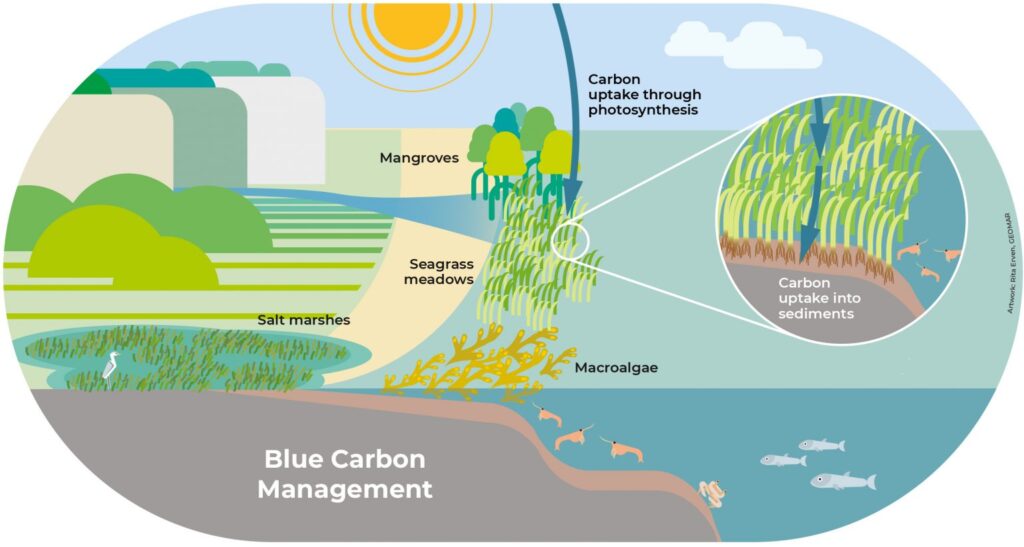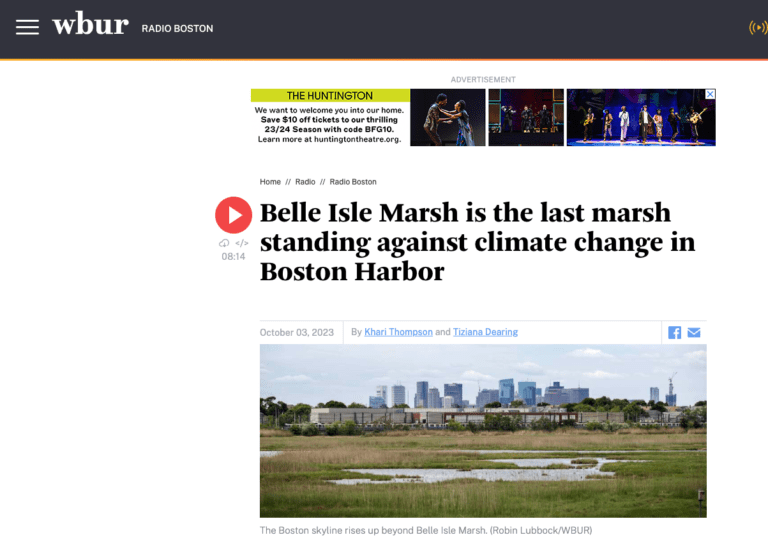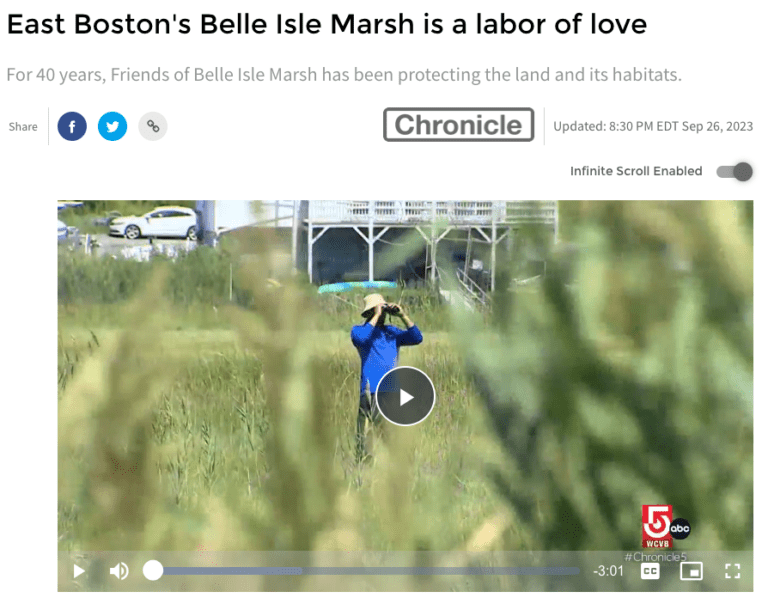Friends of Belle Isle Marsh on WBUR’s Radio Boston
October 3, 2023 – As part of NPR’s Climate Week coverage, an FBIM board member, and the organization’s community engagement staff member discuss the importance of preserving Boston Harbor’s last salt marsh with Tiziana Dearing, host of WBUR’s Radio Boston.
Belle Isle Marsh featured on Chronicle TV
Sept. 27, 2023 – “East Boston’s Belle Isle Marsh is a labor of love” was a feature on Chronicle TV, WCVB/ABC, marking 40 years of the grassroots efforts of “Friends of Belle Isle Marsh” advocating for the marsh and its habitats.
FBIM board president Kannan Thiruvengadam, past board president Gail Miller, and DCR site supervisor Sean Riley explain the importance of the marsh for the community as well as for birds and other wildlife.
FBIM Receives a Gulf of Maine Council Award!
The Gulf of Maine Council’s Sustainable Communities Award recognizes a community, or group within a community, for exemplary work in achieving sustainability outcomes related to the environment and economy that improve the well-being of communities within the Gulf of Maine watershed. Friends of Belle Isle Marsh is honored to receive this award for outstanding contributions toward promoting sustainable outcomes for both communities and the environment. FBIM was recognized for their important work in both advocacy and education, serving as a voice for the marsh whenever development threatens and helping build the next generation of stewards. FBIM was also acknowledged for establishing a Community Advisory Group that is helping the project team (Mystic River Watershed Association, Woods Hole Group, Town of Winthrop, Cities of Revere and Boston, Department of Conservation and Recreation, The Nature Conservancy, MassBays NEP) to determine nature-based strategies for protecting the marsh and neighboring communities from climate change impacts. Thank you, partners, and Gulf of Maine Council!
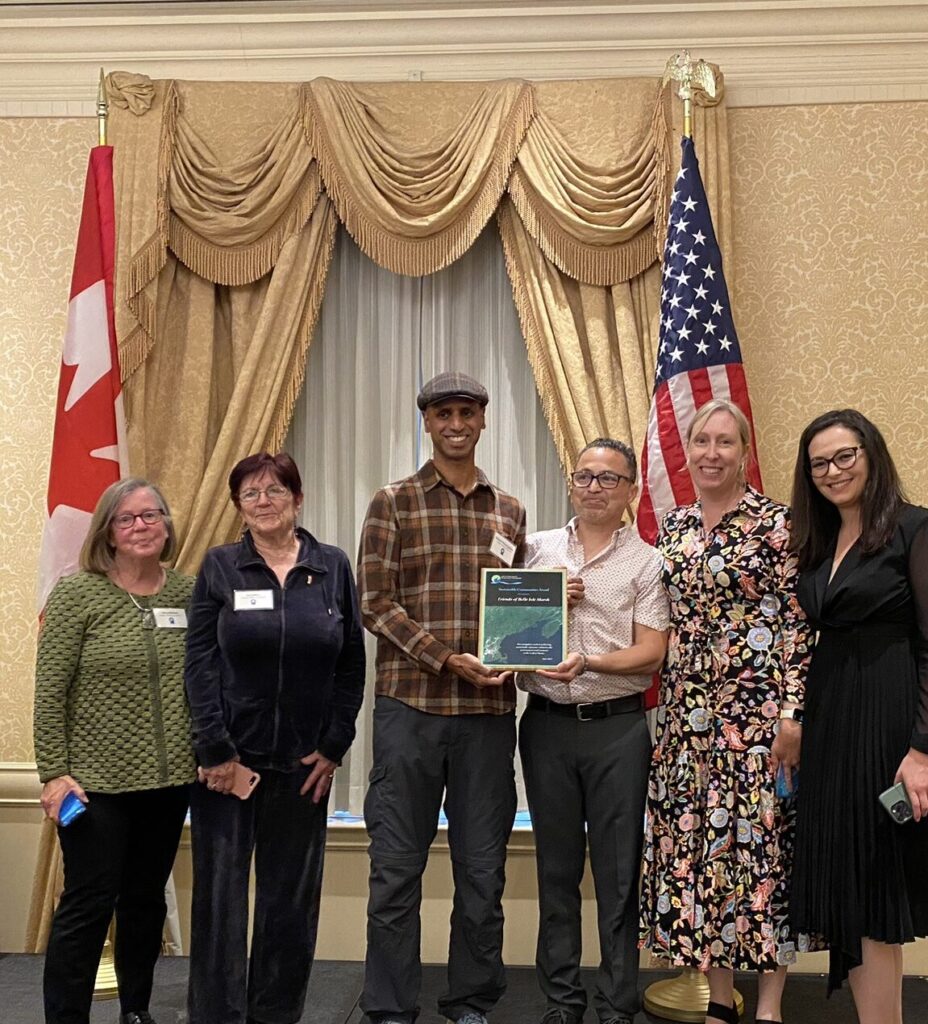
The Significance of Governor Healey’s Visit to Belle Isle Marsh
By Ana Tavares Leary
On April 19, 2023, Governor Healey visited Belle Isle Marsh during Earth Week. The first governor’s visit since Michael Dukakis’ in 1990, Governor Healey chose this ACEC, or an Area of Critical Environmental Concern, to announce the continuation of the Municipal Vulnerability Preparedness (MVP) 2.0 program with Energy and Environmental Affairs Secretary Rebecca Tepper. The MVP program has supported multijurisdictional environmental challenges; cities and towns across the Commonwealth have updated and improved their climate resiliency projects under this pilot program. While the first phase of this program was dedicated to planning, MVP 2.0 is focused on putting these plans into action. (Click here to access the full article.)
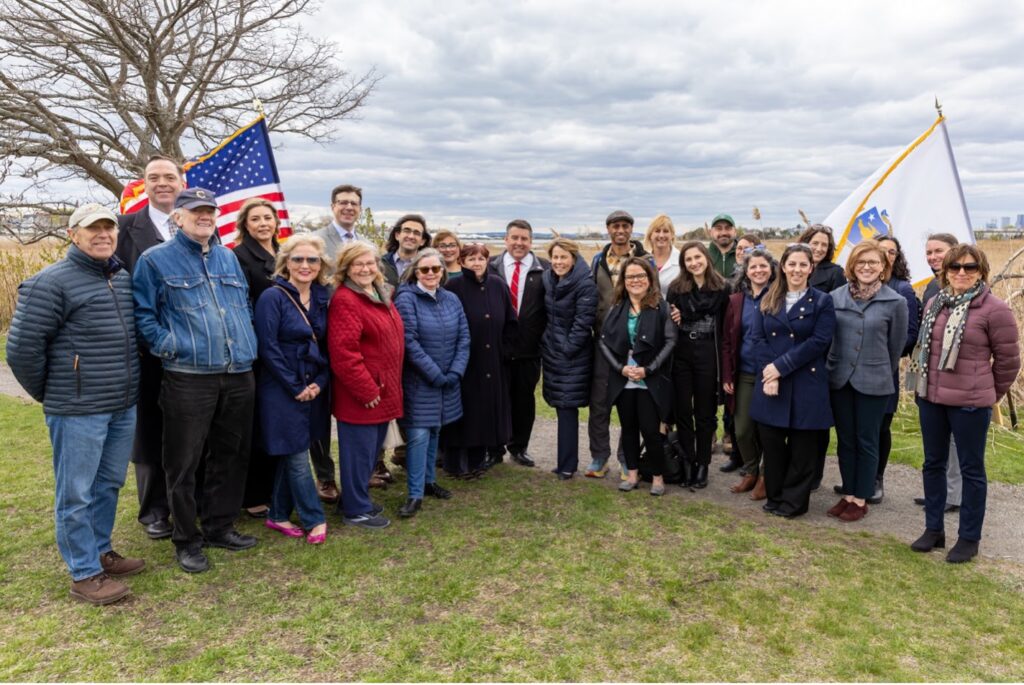
A Climate Resilient Boston Needs Belle Isle Marsh
By Ana Tavares Leary
Nestled between the cities of Boston, Revere, and Winthrop lies a natural barrier to climate change, the 359-acre Belle Isle Marsh. A salt marsh is a low-lying, coastal area that mostly comprises grasses that are frequently flooded by ocean tides.
This wetland protects coastal areas from flooding, destructive winds, higher tides, and increasingly intense storms. Plants in salt marshes help buffer the coast and reduce the impacts of storm surges, such as those generated during hurricanes. The Marsh delivers essential ecosystem services, which are important to help reduce climate change impacts caused by rising sea levels and severe weather events. Belle Isle Marsh provides critical habitats for wildlife—including the 271 species of birds which have been documented there—and recreation areas for local communities. (Click here to access the full article.)
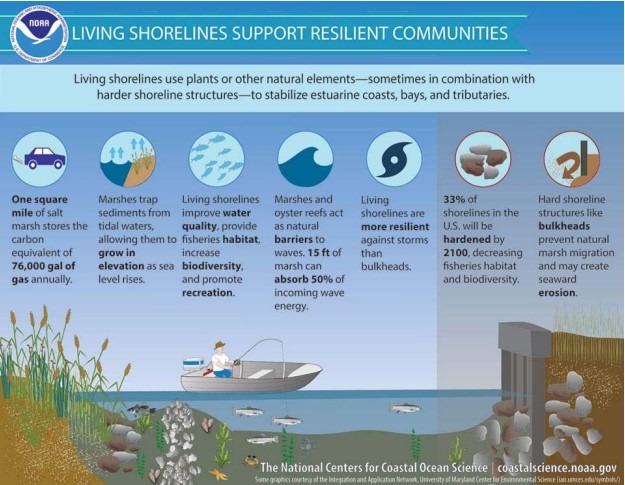
Blue Carbon and Belle Isle Marsh
By Julie Conroy & Ana Tavares Leary
Carbon sequestration is the process of capturing carbon dioxide from the atmosphere, measured as a rate of carbon uptake per year. Carbon storage is the long-term confinement of carbon in plant materials and sediment, measured as a total weight of carbon stored.
Salt marshes have been found to be one of the most effective carbon sinks on the planet, able to sequester carbon up to 10 times faster than tropical rainforests. This carbon storage is known as “blue carbon.” Globally, it is estimated that coastal ecosystems—salt marshes, mangroves, and seagrass meadows—are responsible for sequestering up to 1.4 billion tons of carbon per year. This is equivalent to the annual emissions of 553 million cars. Salt marshes can sequester about 1,940 pounds of carbon per acre per year. Belle Isle Marsh, therefore, sequesters approximately 350 tons of carbon per year, or the equivalent of emissions from 319,000 miles of air travel. (Click here to access the full article.)
